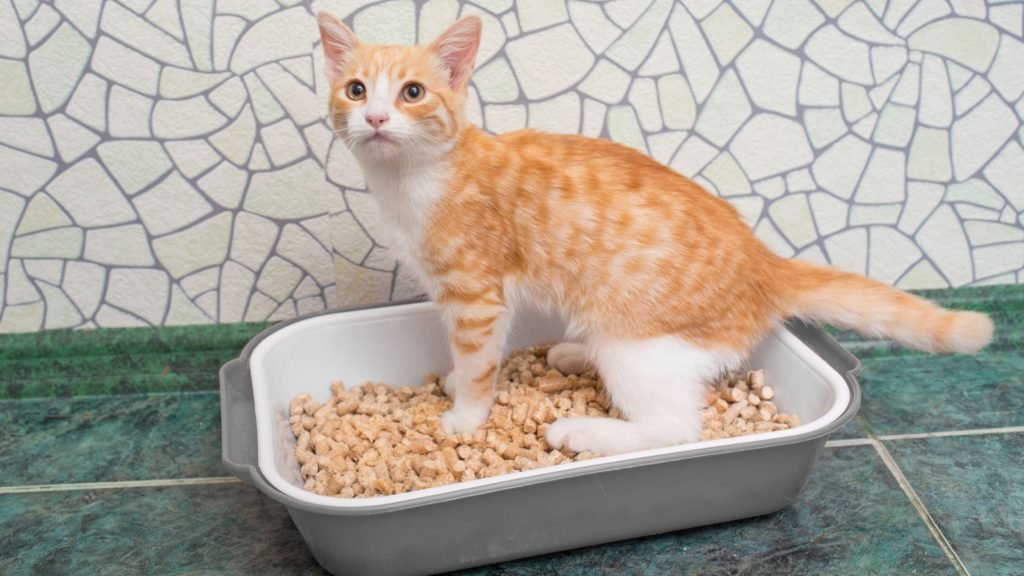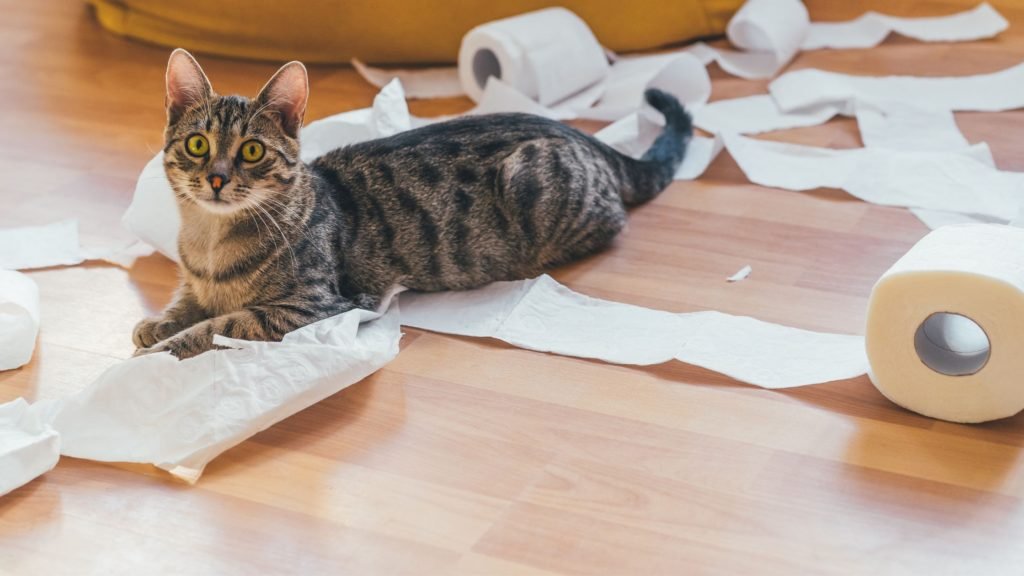If you think training a cat is impossible, think again. Cats can learn various tricks and behaviors, just like their canine counterparts. But what’s the best way to train cats? In this comprehensive guide, we’ll explore practical methods for feline training, from toilet training to teaching fun tricks. Prepare to embark on an exciting journey to unlock your cat’s full potential!
Understanding Your Cat’s Behavior: The Foundation of Successful Training
Before diving into the best way to train cats, it’s essential to understand your feline friend’s natural behaviors and instincts. Cats are independent creatures, and their learning style differs significantly from dogs. You must first understand your cat’s unique needs and motivations to train your cat effectively.
Positive Reinforcement: The Key to Feline Training
The best way to train cats is by using positive reinforcement. This method involves rewarding your cat for performing a desired behavior, which encourages them to repeat the action in the future. Positive reinforcement can take various forms, such as treats, praise, or playtime. The key is to find what motivates your cat and use it to reinforce good behavior.
Patience and Consistency: Essential Ingredients for Successful Cat Training
Training a cat requires patience and consistency. Cats may learn slower than dogs, but you can achieve remarkable results with persistence and a positive approach. Here are some essential tips for maintaining patience and consistency during the training process:
- Keep training sessions short and focused: Cats have a shorter attention span than dogs, so limit training sessions to 5-10 minutes to avoid overwhelming your cat.
- Train regularly: To solidify new behaviors, practice training exercises daily or every other day.
- Use clear, consistent cues: Choose specific words or hand signals to communicate your desired behavior, and use them consistently.
Best Cat Toilet Training System: Transitioning Your Cat to a Litter-Free Life

Toilet training your cat may seem daunting, but you can achieve a litter-free home with the right approach. The best cat toilet training system involves a gradual transition from the litter box to the toilet using a series of steps:
- Move the litter box closer to the toilet: Gradually move the litter box closer to the bathroom over several days, allowing your cat to adjust to the new location.
- Raise the litter box: Slowly elevate it until it is level with the toilet seat. Use stacks of newspapers, magazines, or a sturdy platform to raise the box.
- Introduce a toilet training seat: Replace the litter box with a specially designed toilet training seat. The seat should have a small hole in the center, with litter surrounding the hole. That allows your cat to become familiar with the sensation of standing on the toilet while still using the waste.
- Gradually enlarge the hole in the training seat: As your cat becomes comfortable using the toilet training seat, gradually increase the hole size, reducing the amount of litter. That encourages your cat to balance on the toilet seat and eliminates the need for waste.
- Remove the training seat: Once your cat consistently uses the toilet, remove the training seat altogether.
You May Also Interest: Becoming a Cat Groomer: Unlock a Rewarding Career
Best Way to Litter Box Train a Cat: Establishing Good Habits from the Start
Litter box training is an essential skill for indoor cats. To ensure success, follow these guidelines for the best way to litter box train a cat:
- Choose the correct litter box: Select a litter box that is large enough for your cat to move around comfortably. Covered or uncovered options are available, so consider your cat’s preferences.
- Select appropriate litter: Experiment with different litter types to find one your cat prefers. Unscented, clumping waste is famous for many cats and their owners.
- Place the litter box in a quiet, accessible location: Cats value privacy when using their litter box, so place it in a low-traffic area away from food and water dishes.
- Keep the litter box clean: Scoop it daily and clean it thoroughly at least once a week. Maintaining a clean litter box will encourage your cat to use it consistently.
- Monitor your cat’s litter box habits: Keep an eye on your cat’s litter box usage, and address any issues promptly. If your cat stops using the litter box or experiences difficulty, consult your veterinarian to rule out any health concerns.
Best Tricks to Teach Your Cat: Fun and Engaging Activities for Feline Friends
Training your cat to perform tricks can be a fun and rewarding experience. Not only does it provide mental stimulation for your cat, but it also strengthens the bond between you and your furry friend. Here are some of the best tricks to teach your cat:
- Sit: Teaching your cat to sit on command is a foundational trick that can pave the way for more advanced training. Use a treat to lure your cat into a sitting position, then reward them with praise and joy when they comply.
- High-five: Once your cat has mastered “sit,” you can teach them to high-five. Hold a treat and encourage your cat to paw at it. As they reach for the treat, say “high-five” and reward them when they contact your hand.
- Come when called: Teaching your cat to come when called can be a valuable safety skill. Begin by contacting your cat’s name and rewarding them with a treat when they approach. Gradually increase the distance between you and your cat, continuing to reward them for responding to your call.
- Fetch: Although more commonly associated with dogs, many cats can learn to play fetch. Start by tossing a favorite toy briefly and encouraging your cat to retrieve it. Reward your cat with praise and a treat when they bring the toy back to you.
- Jump through a hoop: You can teach your cat to jump through a hoop with patience. Hold the circle a short distance off the ground, using a treat to lure your cat through it. Gradually raise the hoop, rewarding your cat for each successful jump.
Tips for Overcoming Training Challenges

As you embark on your cat training journey, you may encounter some challenges. Here are a few tips to help you overcome common obstacles:
- Be patient: Cats have a different learning style than dogs, and progress may be slower than expected. Stay patient, and celebrate small victories along the way.
- Adjust your expectations: Accept that your cat may not master every trick or skill you attempt. Focus on their progress, and be open to adapting your training approach if needed.
- Use appropriate rewards: Identify what motivates your cat, whether it’s treats, praise, or playtime. Use these rewards consistently to reinforce desired behaviors.
- Seek professional help if needed: If you’re struggling with training or encountering persistent issues, consider consulting a professional cat trainer or behaviorist.
The Benefits of Cat Training

Training your cat offers numerous benefits for both you and your feline friend. Here are some of the advantages of investing time and effort into cat training:
- Improved communication: Training helps you better understand your cat’s behavior while teaching your cat to respond to your cues and commands.
- Enhanced safety: Teaching your basic cat commands like “come” can prevent them from getting into dangerous situations, such as running into a busy street or approaching a potentially harmful animal.
- Mental stimulation: Learning new skills and tricks keeps your cat’s mind sharp, preventing boredom and promoting overall well-being.
- Strengthened bond: Training helps build trust and strengthens the connection between you and your cat.
- Easier veterinary visits: Training your cat to be comfortable with handling, restraint, and basic commands can make veterinary appointments less stressful for you and your cat.
You May Also Interest: Why Is My Litter Trained Cat Pooping Everywhere?
Clicker Training for Cats: A Powerful Tool for Positive Reinforcement
Clicker training is a popular method used in animal training, including cats. This method uses a little click device to tell the animal it did the right thing. Your cat will quickly learn to associate the click with a reward, such as a treat or praise. Cat clicker training tips:
- Introduce the clicker: Begin by clicking the device and immediately offering your cat a treat. Repeat this process several times to help your cat understand that the clicker sound means a reward is coming.
- Teach basic commands: Once your cat has learned to associate the clicker with rewards, you can use it to teach basic commands like “sit,” “stay,” and “come.” Give the control, then use the clicker and reward your cat when they perform the desired behavior.
- Progress to more advanced tricks: As your cat becomes proficient with basic commands, you can use the clicker to teach more advanced tricks like “high-five,” “fetch,” and “jump through a hoop.”
Clicker training is an effective way to train cats, as it provides clear, immediate feedback and allows for precise communication between you and your cat.
Socialization and Training: Setting Your Cat up for Success
Socialization is a crucial aspect of cat training, particularly for kittens. Exposing your cat to various experiences, people, and other animals early in life can help them develop into well-adjusted, confident adults. Here are some tips for socializing and training your cat:
- Start early: The critical period for cat socialization occurs between 2 and 7 weeks of age, so begin exposing your kitten to new experiences as early as possible. However, there is always time to start socializing an older cat, although the process may take longer.
- Gradually introduce new experiences: Introduce your cat to different people, animals, and environments, and handle situations slowly and calmly. Ensure each experience is positive and rewarding for your cat to create positive associations.
- Combine socialization with training: Use training exercises and commands to help your cat feel confident and secure in new situations. Practice these skills regularly to reinforce good behavior and maintain your cat’s progress.
You May Also Interest: The Ultimate Guide to Cage Training a Cat: Tips and Techniques
Troubleshooting Common Cat Training Issues
As you work through your cat training journey, you may encounter some common issues that can hinder progress. Here are a few potential problems and their solutions:
- Inconsistency: Inconsistent training can confuse your cat and slow the learning process. Ensure you consistently use the same cues and rewards and have all family members follow the same training methods.
- Negative reinforcement or punishment: Using negative reinforcement or punishment during training can create fear and anxiety in your cat, making it more challenging to teach new behaviors. Always use positive reinforcement to reward good behavior rather than punish mistakes.
- Overwhelming your cat: Cats have a shorter attention span than dogs, so keeping training sessions brief and focused is essential. Overcoming your cat with too much information or commands at once can lead to frustration and a lack of progress.
- Medical issues: If your cat is struggling with training or experiencing a sudden behavior change, consult your veterinarian to rule out any underlying medical problems affecting their ability to learn or perform tasks.
- Unrealistic expectations: Remember that every cat is different; some may take longer to learn new skills or commands than others. Be patient and adjust your expectations accordingly, focusing on your cat’s progress rather than comparing them to others.
Enrichment Activities to Support Training
In addition to formal training sessions, providing your cat with a stimulating and enriching environment can help support their learning and overall well-being. Here are some enrichment ideas to incorporate into your cat’s routine:
- Puzzle feeders: These toys require your cat to solve a puzzle or manipulate the feeder to access their food, providing mental stimulation and encouraging problem-solving skills.
- Interactive toys: Engaging toys that require your cat to chase, pounce, or bat at moving objects can help build their physical skills and coordination while providing entertainment and exercise.
- Vertical space: Cats love to climb and explore, so providing them with steep areas like cat trees, shelves, or window perches can allow them to survey their territory and practice their agility.
- Social interaction: Regular playtime and interaction with you or other pets can help your cat build social skills and strengthen the bond between you.
In Conclusion: Achieving Success in Cat Training
Training your cat may seem challenging, but you can help your feline friend learn new skills and behaviors with the right approach, patience, and consistency. By focusing on positive reinforcement, clicker training, socialization, and enrichment, you can set your cat up for success and enjoy a stronger bond with them.
Remember that every cat is unique, and progress may be slower than expected. Celebrate each small victory and adjust your expectations as needed. Dedication and perseverance can unlock your cat’s full potential and create a harmonious and fulfilling relationship with your furry companion.

